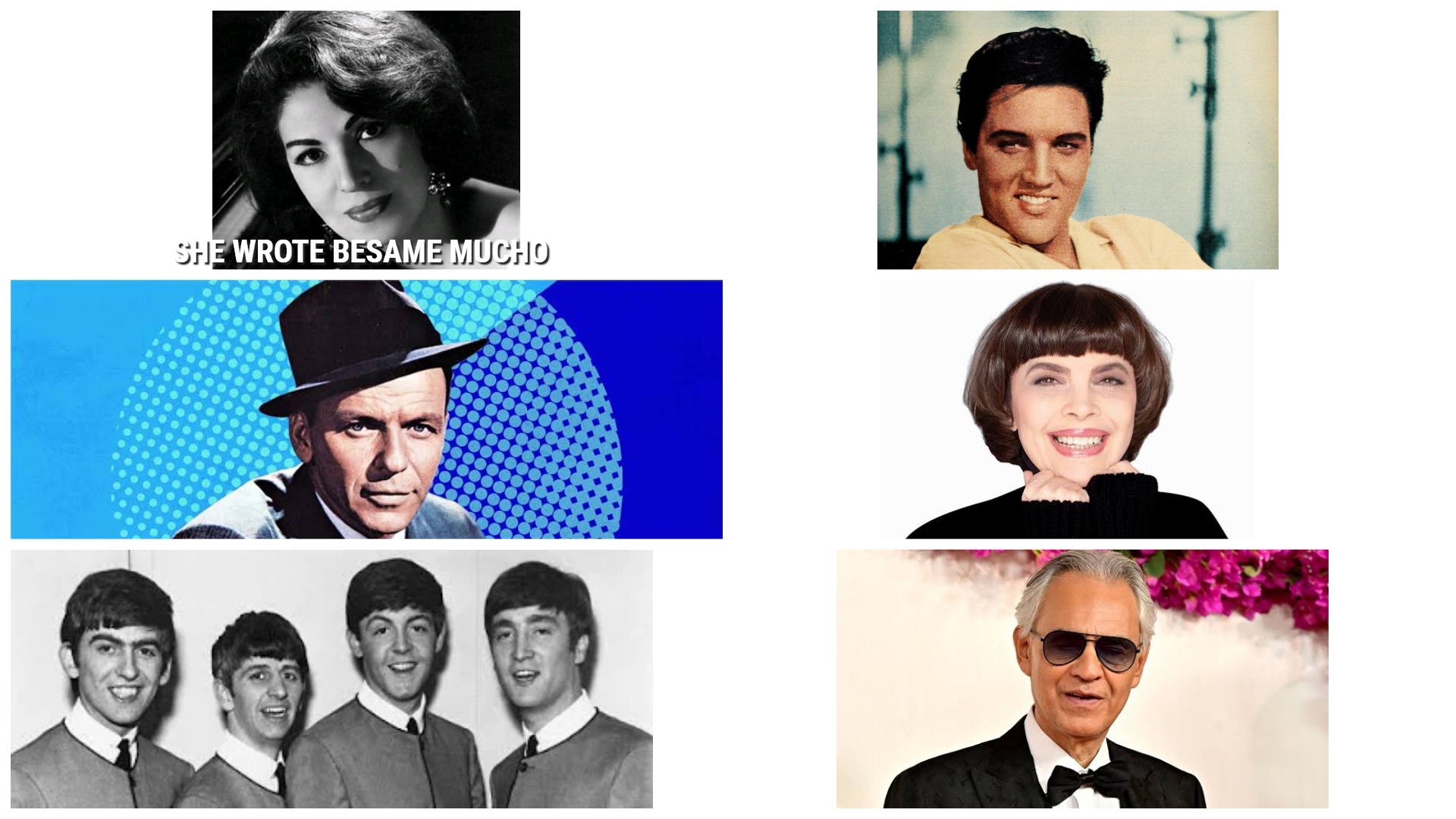She was a quiet, introverted girl of sixteen, born on August 21, 1916, in Ciudad Guzmán, Jalisco, the youngest of five daughters. Her father, a soldier and poet, died early, leaving the family struggling to make ends meet. But from the age of four, Consuelo Velázquez revealed a magical gift for music. At six, she began piano lessons, and by eleven she was admitted to the National Conservatory of Music in Mexico City, where she trained relentlessly.

She gave her first public recital at just six years old. By her teens, she was already performing with the National Symphony Orchestra of Mexico.
At around sixteen—before ever being kissed—she composed “Bésame Mucho.” The song was a bolero drenched in longing, an imagined love story. She later confessed: “I hadn’t even been kissed yet when I wrote it. It was just a dream.” Her melody was partly inspired by the Spanish composer Enrique Granados and his piano suite Goyescas.

Terrified of ruining her reputation as a “proper young lady,” she submitted the song under a pseudonym. Soon, the artistic director of the radio, Mariano Rivera Conde, demanded to meet the mysterious author. Their meeting blossomed into a relationship—six years later, they were married.
The first recordings of “Bésame Mucho” appeared in 1941, performed by Emilio Tuero and Chela Campos. Within a year, the song crossed into the United States, where Jimmy Dorsey’s version topped the charts. The world was at war, and soldiers and lovers clung to its haunting refrain—“Kiss me, kiss me a lot, as if tonight were the last time.”
The song became a universal hymn of longing. Women across continents wept as they listened, imagining the possibility that each kiss with their loved ones could be the last before war took them away.

Over the decades, “Bésame Mucho” was recorded by more than 700 artists, including The Beatles, Frank Sinatra, Elvis Presley, Plácido Domingo, Diana Krall, Luis Miguel, and countless others. It was translated into more than 20 languages and sold over 100 million copies worldwide. In 1999, it was officially named the most recorded Spanish-language song of all time.
Despite the fame, Velázquez remained humble. Hollywood called—she was even offered a screen test and a role in The Three Caballeros. Rumors swirled that Gregory Peck admired her, and even Walt Disney noticed her charm. But Velázquez turned down the offers. She returned to Mexico, determined to be remembered not for fleeting stardom, but for her music.
She married Rivera Conde, gave birth to two sons, Mariano and Sergio, and continued a career as a concert pianist and composer. She wrote nearly 200 works—songs, sonatas, oratorios, even symphonies. Yet none ever surpassed the song of her youth.
Later in life, she served as president of the Mexican Society of Authors and Composers and even as a member of the Mexican Chamber of Deputies from 1979 to 1982. She received the National Prize for Arts and Sciences and other prestigious awards.
On January 22, 2005, Consuelo Velázquez passed away at the age of 88. Her body lay in state at the Palacio de Bellas Artes in Mexico City—the same stage where she had once played as a child prodigy.
Her life was a paradox: the woman who gave the world the most passionate kiss had written it from pure imagination. She had never been kissed when she composed it. Yet her fantasy outlived her, becoming one of the most powerful love songs of the 20th century.
👉 From innocence, she created passion. From silence, she created music. From longing, she gave the world eternity.

